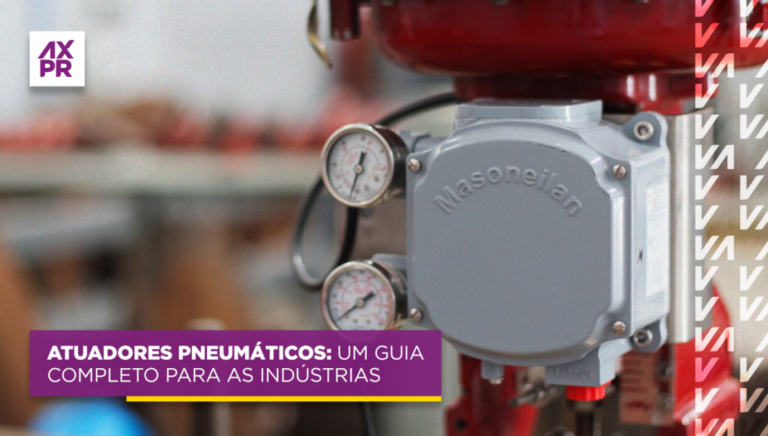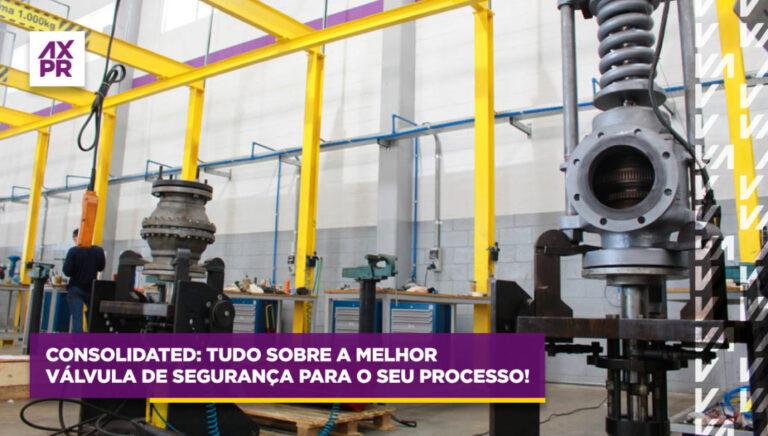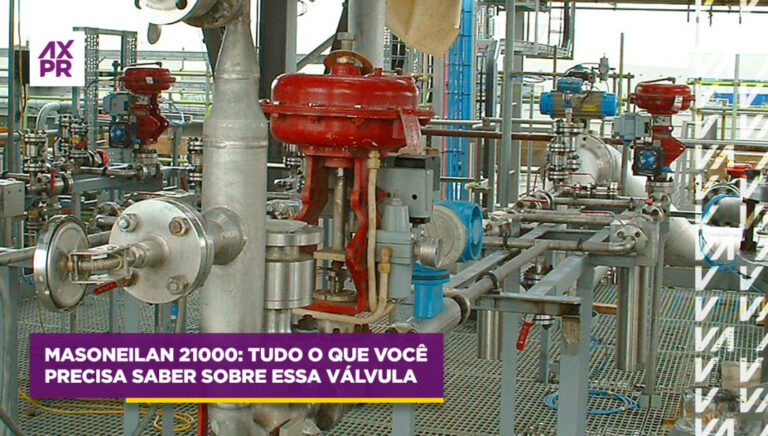Understand everything about different types of actuators (electric, hydraulic, and pneumatic), their applications, and benefits.
Actuators are versatile devices because they have specific characteristics that allow them to serve different industrial sectors. It is necessary to understand these aspects and their needs to choose the most suitable model for your operation.
To help you better understand how this works, we have prepared this article to cover the following topics:
- What is an actuator;
- Different energy sources (electric, hydraulic, and pneumatic);
- Proportional or on/off control;
- What should be analyzed to choose the ideal model.
Read this text to the end, as we will fill it with tips on articles that will complement the theme. Happy reading!
What is an actuator?
Responsible for providing the driving force necessary to move the plug of a valve, actuators have the function of converting pneumatic, hydraulic, or electric energy into mechanical energy.
This means that the actuator provides the energy needed to move the valve stem, thereby altering the flow rate. This force exerted must be capable of controlling the static and dynamic forces resulting from flow pressure.
In addition, it is necessary to overcome the friction forces of the packing and the plug with its guide system due to the pressure drop exerted.
And how is this dimensioned? Before moving on to this topic, it is worth noting that this calculation must be performed by a specialist, the user must only provide the data about their process.
Thus, the actuator force must be multiplied by the seat ring area to keep the valve closed. It is also necessary to have additional force to ensure the tightness of the plug in relation to the ring, especially for simple globe seat valves with upward flow.
Now that you understand a little more about its operating principle, let's delve into the different types of actuators in the following topic!
Different types of actuators: Electric, hydraulic, and pneumatic
As seen earlier, actuators play a fundamental role when it comes to industrial process automation. But to perform this function, an energy source (electric, hydraulic, or pneumatic) is necessary, and that is what we will see next.
Electric actuators
Starting with actuators that convert electrical energy into mechanical energy in order to control the valve plug. Electric actuators are widely used devices in various sectors of the industry, especially in machinery operation and valve control.
In addition, this type of actuator is highly recommended for places where there is no supply of compressed air or the ambient temperature is very low, which can freeze condensed water in an air line of pneumatic actuators.
We can also say that one of the greatest advantages of electric actuators compared to other types is related to their gear system, which allows secure positioning of the sealing element in any desired position.
This characteristic is an advantage, especially for globe valveso, as it maintains the valve's flow characteristic fixed even with the dynamic forces caused by fluid pressure on the plug.
However, we must emphasize that this actuator is more expensive and complex than other types – which we will see in more detail below.
Are you interested and want to learn more about electric actuators? Then check out the article we just published on our blog! Click here and discover the different models, their advantages, and main applications.
Hydraulic actuators
Simply put, hydraulic actuators are devices that convert fluid pressure into motion.This fluid acts on a piston that provides the necessary force to control the valve plugs.
A characteristic that we must highlight for this type of actuator is that the production of this thrust will always generate linear movements.
In addition, hydraulic actuators are devices that perform intense movement, and for this reason, they are widely used in heavy equipment capable of serving various industrial sectors, including:
- Automotive;
- Pulp and paper;
- Food industry;
- Agribusiness;
- Among others.
Still on this device, we can say that one of its main advantages is in relation to its precision, as they were designed specifically to optimize flexible movements, as well as efficiency for industrial processes.
Finally, hydraulic actuators also offer less energy consumption and longer lifespan compared to other types of actuators – if used correctly.
Pneumatic Actuators
Among the types of actuators mentioned earlier, pneumatic actuators are one of the most used by the industry because they can easily be adapted to various sizes of valves, and are much cheaper compared to electric and hydraulic actuators.
Basically, this device is activated by compressed air . originating from a controller, positioner, or other external source. From this, this solution converts compressed air into mechanical movement, allowing the valve plug to move converts compressed air into mechanical movement, allowing the valve plug to move
In addition, another important characteristic is that pneumatic actuators are ideal mainly in circumstances where it is necessary to continue operating even when there is a power outage.
Thus, the main industrial sectors in which they are present are:
- Food industry;
- Pharmaceutical;
- Pipelines;
- Water treatment;
- Pipeline;
- Among many others.
And if you want to learn more about pneumatic actuators, know that today is your lucky day, as we have just published an article that talks all about this solution. Click here and read it now!
Different movements of actuators
In addition to the different energy sources, as we saw in the previous topic, there are also different movements exerted by actuators: linear and rotary.
Linear movement: Linear actuators open and close valves through linear force. They are widely used in globe or gate valves.
Rotary movement: Rotary actuators produce the rotational or rotary movement necessary to open or close ball or butterfly valves..
If you want to delve into this topic, you should access the articles on electric and pneumatic actuators published here on our blog – the links were mentioned above.
On/off or proportional control: Understand the difference
Actuators have two types of controls: on/off or proportional, which means that for each type of operation, there is a function to be performed. Let's understand each of them below.
On/off control: This type of control is very common in our daily lives. It basically offers the function of turning on or off, which in the case of valves works as follows: The control valve is connected to an on/off actuator that provides maximum output, which can be fully open or closed.
Proportional control: Unlike this, this type of control acts proportionally in the opening and closing of a valve according to the received signal, accurately regulating the passage of fluids, which ensures that the system operates properly and precisely.
How to choose the ideal actuator model?
After understanding all the concepts and different types, it became even clearer how versatile an actuator is. But before we address which factors should be analyzed to choose the ideal model, it is worth emphasizing again that:
Only a professional expert in the subject will be able to understand the needs of your operation and indicate an ideal actuator. Only in this way will you ensure effectiveness at this moment!
Having said that, when it comes time to select which actuator best suits your operation, the following aspects are analyzed:
- What are the available energy sources?
- Should it be proportional or on/off control?
- What type of valve is used (linear or rotary)?
- What is the torque required to open the valve?
- What is the installation environment like?
- What are the risks that should be taken into account?
- What is the desired budget?
- What is the desired operating speed?
And when this moment of actuator selection arrives, know that you can count on us to help you with this!
We are a specialist company in maintenance and supply of parts certified by Masoneilan, a Baker Hughes brand that has been revolutionizing the valve market for over a century. We have national coverage, which ensures that you will never be without support!
Count on us to help you automate your industrial processes and achieve significant results with it!
Talk to our team right now by clicking here to ask all your questions and request a quote from our team of specialists!





